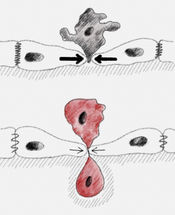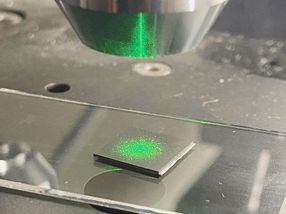Early detection of cancer
Molecules that bind and illuminate proteins specific to tumor cells are key to detecting cancer as early as possible. The cyclooxygenase-2 (COX-2) enzyme is just such a protein, as the concentration of COX-2 is greater in cancer cells than in adjacent normal tissues. Therefore, attaching a suitable fluorescent label to a selective COX-2 inhibitor would be an effective strategy for the noninvasive detection of tumors in which COX-2 levels are elevated.
As they report in ChemMedChem, a collaboration led by Frank Wuest, Edward Knaus, and colleagues at the University of Alberta in Canada resulted in an important compound in which a 7-nitrobenzofurazan (NBD) fluorescent label is linked to the well-known anti-inflammatory drug celecoxib (celecoxib–NBD conjugate). Biological studies showed that this conjugate is a potent and selective inhibitor of COX-2, a COX-2-specific biomarker for fluorescence imaging of cancer, and a useful optical probe for targeted imaging of COX-2 in cells and small animals, as well as for clinical imaging of tissues suitable for topical or endoluminal illumination, such as esophagus and colon.
"These results will be of interest to researchers and clinicians with specialization in the use of fluorescent biomarkers for the imaging and/or diagnosis of disease states in which the COX-2 isozyme is expressed, such as colon cancer," says Knaus. This work marks a significant step forward in efforts to facilitate the detection and diagnosis of cancer as early as possible.
Original publication
Other news from the department science

Get the life science industry in your inbox
By submitting this form you agree that LUMITOS AG will send you the newsletter(s) selected above by email. Your data will not be passed on to third parties. Your data will be stored and processed in accordance with our data protection regulations. LUMITOS may contact you by email for the purpose of advertising or market and opinion surveys. You can revoke your consent at any time without giving reasons to LUMITOS AG, Ernst-Augustin-Str. 2, 12489 Berlin, Germany or by e-mail at revoke@lumitos.com with effect for the future. In addition, each email contains a link to unsubscribe from the corresponding newsletter.





















































